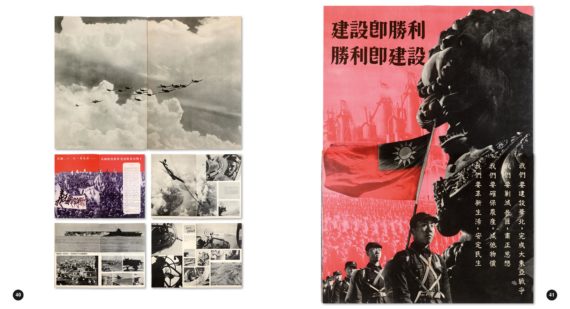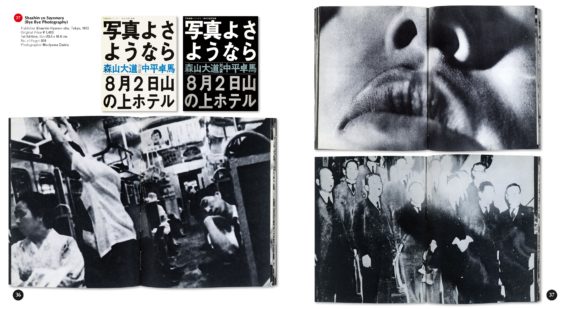In the introductory essay by photobook historian Kaneko Ryuichi, published in The Japanese Photobook, 1912-1990 (Steidl, 2017), he describes a photobook in these terms:
We hold a book that represents a Reality in one volume, containing a Vision that the person or persons who created the book have tried to depict. We turn the pages of that book, and by comprehending the words and images recorded there, we receive rich emotions and diverse messages.
In 3500 images, this book delves into the rich tradition of photobooks in Japan and the development of photography in the country. Chronicling early European photographic influences and Bauhaus to Imperial military propaganda to WWII breakdown and recovery to the Provoke movement and political protest—this volume touches on the development of photobook design and the power of the printed image.

The images above are from issues 12 and 13 of Front, a pro-Imperial military propaganda publication created by the Japanese army. Photojournalists including Kimura Ihei, Hamaya Hiroshi, Watanabe Tsutomu, and Kikuchi Shunkichi, among others, regularly contributed to the publication.






